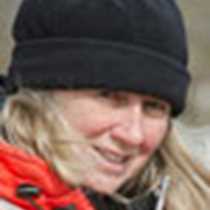L’Anse aux Meadows & Red Bay
How do we know when we find what we are looking for? This question must have been asked many times over the millennia when humans visited these shores. What hint was there written upon the land that told them it was right to stay? What clues then told the seekers of the past to look here for their answers?
The seas are squeezed and forced between the finger of Newfoundland and the toes of Labrador. All life that wishes to go from west to east or east to west must transit here or make the long journey south. Fish, seals, whales and man are all swept through the Straits of Belle Isle. All seek the necessities of life; food, water, shelter and space. Some give life to others. Others take lives to improve their lot.
For eight thousand years man has trod upon these shores. The stories of many are lost but others live on in fact and fantasy. A ghostly figure on the stormy shore, dressed as a settler of the past is a symbol of one culture, come and gone. Did the Vikings stand at the edge of the bay and see a resemblance to home? In our minds we could. We have been to Greenland from where they came and some have visited Scandinavia too. The tundra there screams with similar colours, its flora overlapping in many ways. At L’Anse aux Meadows rocky mounds surrounded an arching cove where a perfect semicircular ridge cried out to be a building site. As modern man sought for this rumored “Vinland”, how logical it was to look along this edge. It is not long before a practiced eye learns to read the stories in vegetation or contours that are out of place on the glacially sculpted land.
Were the residents of Red Bay curious about the mountains of aging red clay tiles scattered here and there around their town and littering nearby Saddle Island? They must have been but the answers were slow to come, in fact quite recently. Did the Basque whalers climb to the heights as we did today and see a perfect land? There below the waters might have been filled with leviathans. Behind the island their ships were safely sheltered from the storm as they went about the task of rendering whales to oil. Today little remains of their presence except for the red clay tiles and grasses growing vigorously on former trypot sites. Between these spots the boggy sites likely look much as they did before except for the decorations dropped by the gulls. Skeletons of urchins and whelks were scattered everywhere telling of the bounty of life beneath the sea. That bounty was different then. Hundreds of years ago scraps of butchered mammals would have fattened our feathered friends.
As we learn to read the land, our horizons vastly expand.
How do we know when we find what we are looking for? This question must have been asked many times over the millennia when humans visited these shores. What hint was there written upon the land that told them it was right to stay? What clues then told the seekers of the past to look here for their answers?
The seas are squeezed and forced between the finger of Newfoundland and the toes of Labrador. All life that wishes to go from west to east or east to west must transit here or make the long journey south. Fish, seals, whales and man are all swept through the Straits of Belle Isle. All seek the necessities of life; food, water, shelter and space. Some give life to others. Others take lives to improve their lot.
For eight thousand years man has trod upon these shores. The stories of many are lost but others live on in fact and fantasy. A ghostly figure on the stormy shore, dressed as a settler of the past is a symbol of one culture, come and gone. Did the Vikings stand at the edge of the bay and see a resemblance to home? In our minds we could. We have been to Greenland from where they came and some have visited Scandinavia too. The tundra there screams with similar colours, its flora overlapping in many ways. At L’Anse aux Meadows rocky mounds surrounded an arching cove where a perfect semicircular ridge cried out to be a building site. As modern man sought for this rumored “Vinland”, how logical it was to look along this edge. It is not long before a practiced eye learns to read the stories in vegetation or contours that are out of place on the glacially sculpted land.
Were the residents of Red Bay curious about the mountains of aging red clay tiles scattered here and there around their town and littering nearby Saddle Island? They must have been but the answers were slow to come, in fact quite recently. Did the Basque whalers climb to the heights as we did today and see a perfect land? There below the waters might have been filled with leviathans. Behind the island their ships were safely sheltered from the storm as they went about the task of rendering whales to oil. Today little remains of their presence except for the red clay tiles and grasses growing vigorously on former trypot sites. Between these spots the boggy sites likely look much as they did before except for the decorations dropped by the gulls. Skeletons of urchins and whelks were scattered everywhere telling of the bounty of life beneath the sea. That bounty was different then. Hundreds of years ago scraps of butchered mammals would have fattened our feathered friends.
As we learn to read the land, our horizons vastly expand.




